AUTHOR
 Morgan Hanby Visiting Fellow, CHACR
Morgan Hanby Visiting Fellow, CHACR

 Morgan Hanby Visiting Fellow, CHACR
Morgan Hanby Visiting Fellow, CHACR
The Centre for Historical Analysis and Conflict Research is the British Army’s think tank and tasked with enhancing the conceptual component of its fighting power. The views expressed in this In Depth Briefing are those of the author, and not of the CHACR, Royal Military Academy Sandhurst, Ministry of Defence or the British Army. The aim of the briefing is to provide a neutral platform for external researchers and experts to offer their views on critical issues. This document cannot be reproduced or used in part or whole without the permission of the CHACR. www.chacr.org.uk
THE invasion of Ukraine has thrown into sharp relief the importance of the so-called ‘near abroad’ (ближнее зарубежье) for Russia and Vladimir Putin. This term, originating in the early 1990s, defines the states formed through the dissolution of the Soviet Union. Given the events of the last 15 years, it is quite natural that focus in the Western world has been overwhelmingly directed at Russia’s western ‘near abroad’. It is important, however, to look beyond these areas in order to gain a greater appreciation of Russia’s broader geostrategic concerns, particularly the importance of the five Central Asian republics – Kazakhstan, Tajikistan,
Turkmenistan, Uzbekistan and the Kyrgyz Republic.
Russia has established and maintained significant formal ties with Central Asia since the fall of the Soviet Union. Bodies such as the Commonwealth of Independent States succeeded the Union, maintaining diplomatic links in the post-Soviet space. By far the most influential of these has been the Collective Security Treaty Organization, which counts Armenia, Belarus, Kazakhstan, Kyrgyzstan, Russia, and Tajikistan (and until 2012, Uzbekistan) among its members.
It is ostensibly a security focused organisation along the lines of NATO. It is clearly recognised, however, that the Collective Security Treaty Organization serves a much broader informal purpose, acting as a unifying force between authoritarian regimes and their leaders.1 The organisation has traditionally been defined by inaction, refusing – for example – to intervene in the ethnic unrest in Kyrgyzstan in June 2010 and consistently resisting calls from Armenia to intervene in the Nagorno Karabakh conflict. This all changed with the intervention of a – primarily Russian comprised – peacekeeping force in the civil unrest that occurred in Kazakhstan in January 2022. This action, combined with the
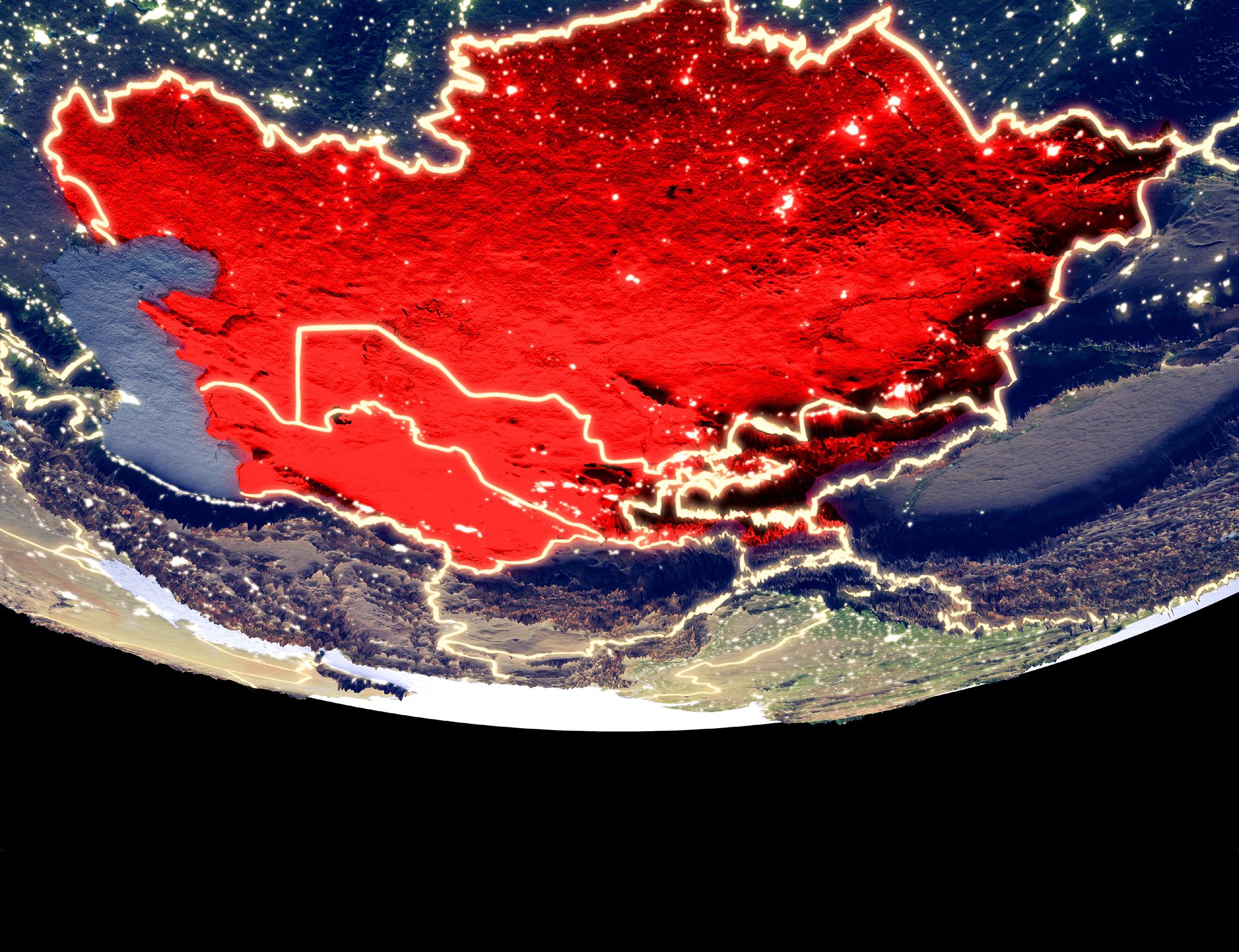
later, has created significant tension within Russia’s cooperative structures. The implications of this for the region and its stability are potentially very serious and require consideration.
This In-Depth Briefing seeks to highlight two important points. Firstly, that the Collective Security Treaty Organization has fundamentally changed and that this will have significant impacts on the cohesion of Central Asia. Secondly, that this matters far more than one might imagine, as Central Asia is a region of greater global significance than it is often accorded in the West.
When one considers the importance of Central Asia, it is worth revisiting the work of Halford Mackinder, the British geographer often regarded as the founder of geopolitics. Mackinder’s ‘heartland’ concept, espoused in a 1904 paper entitled The Geographical Pivot of History, defined an appreciation of the region’s importance.2 His work was largely based on an understanding of the ‘Great
for control of Central Asia by the British and Russian empires, which dominated the two parties’ relations in the 19th and early-20th centuries.3 Mackinder stressed that control of the region would provide great strategic advantage, his famous – and oft quoted – expression “who rules the heartland commands the world-island: who rules the world-island commands the world”, clearly illustrates this.4 It is interesting to note that the founder of geopolitics and geostrategy created these concepts through consideration of Central Asia. It should not, therefore, be a great surprise how significant Central Asia is in the strategies of Russia, China, India and a host of other interested states. More surprising is the lack of note paid to this in the West. Mackinder’s ideas are of course very much products of their time: working in a framework of imperial competition for hegemonic control of spaces and peoples. The picture in Central Asia has developed significantly since his time, particularly through the regional state-making efforts of the Soviet Union in the latter half of the 20th century. The
1991 marked a turning point for the region – competition for control has become defined by influence over the new nation states, or more accurately their authoritarian leaders. However, the physical factors of the region – its geography – have not changed. Central Asia is a region of extreme resource density; with tremendous reserves of natural gas, oil, and water.5 The region also has great mineral and metal reserves – Kazakhstan, for example, produced 43 per cent of the world’s uranium in 2019.6 Furthermore, its centrality means that it continues to act as a bridge between the sides of the world. Where before it bridged the British Empire in the south and the Russian Empire in the north, Central Asia now separates the growing power of China in the east from the Middle East and Europe to the west. Physical geography thus defines the importance of Central Asia. Control of these routes and resources will be hugely important going forward.
A particular resource that is in varying abundance across Central Asian states and that is of primary importance in regional
demand for drinking, irrigation, and hydroelectric power. Under the Soviet Union, the water resources of Central Asia were managed in a regional manner, where water-rich upstream countries provided water for irrigation to downstream countries in spring and summer. In exchange, they were supplied with coal, oil and gas for heating and electricity in the winter months.7 Again, it is shown how important the physical environment is in geopolitics.
2Torbjorn Knutsen, ‘Halford J. Mackinder, Geopolitics, and the Heartland Thesis’, The International History Review, 36:5 (October, 2014) 835-857, (p. 837).
3Petar Kurečić, ‘The New Great Game: Rivalry of Geostrategies and Geoeconomies in Central Asia’, Hrvatski Geografski Glasnik, 72:1 (2010) 21-48, (p. 22).
4Halford Mackinder, Democratic Ideals and Reality: a Study in the Politics of Reconstruction, (London: Constable, 1919), p. 194.
5Central Asia Atlas of Natural Resources (Manila: Asian Development Bank (ADB), 2010).
6‘Uranium and Nuclear Power in Kazakhstan’, World Nuclear Association (December, 2022).
7Filippo Menga, Power and Water in Central Asia (Abingdon: Routledge, 2018), pp. 1-2.

Soviet built structures and infrastructure continue to determine regional relations long after the collapse of the formal cooperation networks that existed under the Union. The importance of water as an asset has led to it being considered to be one of the most likely causes of conflict in Central Asia and Eurasia more widely.8
The value of Central Asia is immense and only likely to grow. Given the global deterioration of fossil fuel resources, the presently underexploited reserves in Central Asia have been posited as a likely solution.9 Access to these resources will likely become a hotly-contested matter in international relations. Furthermore, Central Asia’s rich water resources, which currently supply its people and crops as well as providing much of its power, are being depleted at an alarming rate due to climate change and by 2030 water availability is predicted to be insufficient.10 Central Asia is, thus, an area of increasing significance that is also likely to become more unstable over time.
The Collective Security Treaty Organization was formally founded in 2002, although it has its roots in the 1992 Collective
8Erika Weinthal, State Making and Environmental Cooperation: Linking Domestic and International Politics in Central Asia (Boston: MIT Press, 2002), p. 7.
9Assessment of Energy and Mineral Resource Endowments in Central Asia’, UNECE (October, 2020), pp. 7-8.
10‘Climate Change and Security in Central Asia’, UNDP (November 22nd, 2017), p. 86.
11Richard Weitz, ‘Absent with Leave: Moscow’s Deficient Eurasian Military Alliance’, Middle East Institute (November 29, 2020).
12CSTO, ‘January 10th extraordinary session of the CSTO Collective Security Council’, CSTO (January 10th, 2022).
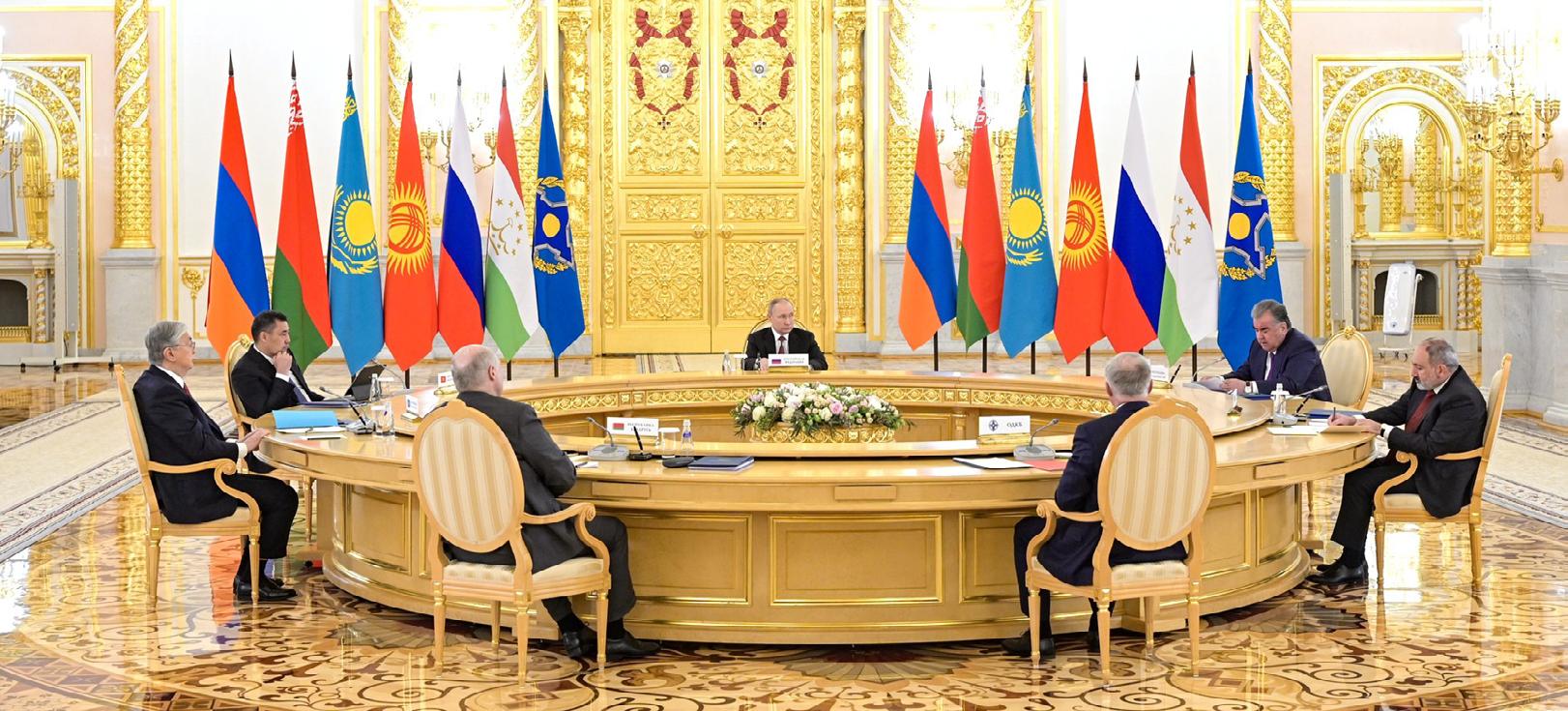
13Pieter Wezeman et. al., ‘Trends in International Arms Transfers, 2020’, SIPRI Fact Sheet (March, 2020), p. 7.
“THE COLLECTIVE SECURITY TREATY ORGANIZATION HAS BEEN A TOOL OF GREAT SIGNIFICANCE FOR RUSSIA OVER THE YEARS. PROVIDING IT WITH STRONG LINKS TO AN IMPORTANT AREA OF ITS NEAR ABROAD; CREATING SECURITY, INFLUENCE, AND ECONOMIC ADVANTAGE.”
Security Treaty. It focuses on regional cohesion and security, opposing terrorism, extremism and drug trafficking. However, its primary stated function is its Article 4 commitment to collective response to external aggression against any of its members. Ostensibly the leadership of the Collective Security Treaty Organization revolves, with a new secretary general appointed by the members every three years. However, Russia is unequivocally the controlling member of the organisation with higher defence spending and armed forces numbers than all other members combined.11 This has consistently been recognised by members of the Collective Security Treaty Organization, the deferential tone in which Central Asian leaders refer to Vladimir Putin in speeches highlights this. For instance, the President of Kazakhstan gave the following opening to an address at a meeting of the organisation’s leaders: “I would like to express special words of gratitude to... Putin for his understanding and for the quick decision to send a Collective Security Treaty Organization peacekeeping contingent to Kazakhstan.”12 This statement highlights the deference which is paid to Russia,
and Vladimir Putin especially, and also implies that Putin was ultimately responsible for the decision to dispatch the peacekeeping component. This is in spite of the fact that Armenian Prime Minister Nikol Pashinyan was the sitting secretary general, thus, demonstrating that Article 13 of the organisation’s charter only provides a veneer of shared leadership and that ultimately Russia is the controlling member.
Russia’s dominance of the Collective Security Treaty Organization represents a significant formal tie to the region, demonstrating the sense of responsibility and ownership Russia still feels towards its former empire. Being the de-facto leader has provided Russia with numerous benefits. Facilitating continued military interoperability with its former satellites increases Russia’s security and provides a large market for overseas arms sales (a significant part of Russia’s economy).13 The collective security framework has also allowed for Russia to maintain a significant overseas basing presence in Central Asia, effectively increasing their national defence boundary. Beyond these physical benefits, the Collective Security Treaty
Organization has ensured that Russia maintained its political dominance over the Central Asian post-Soviet space. All of the Central Asian Collective Security Treaty Organization members have maintained authoritarian regimes, to differing degrees, following the fall of the Soviet Union. This is in stark contrast to Russia’s western near abroad, where democracy has become the norm. The Collective Security Treaty Organization has therefore provided a degree of continuity for Russia in Central Asia, maintaining an order not too dissimilar from that under the Soviet Union.
Russia’s dominance of the Collective Security Treaty Organization has ensured that it has maintained the right to act outside of its framework, Russia also acts unilaterally and bilaterally in the region. For example, Russia acted independently during peacekeeping efforts in Kyrgyzstan in 2020 and in establishing a shared air defence network with Kazakhstan in 2011. These points show that when an issue is of particular interest to Russia, it has the means and willingness to act outside of its formal frameworks in the region.
Equally, informal ties between Russia and the region are robust. They are linked by their shared history, language, and consistent inter-migration. These links provide Russia with a large degree of soft power that no other country will ever realistically be able to match. It is not realistic, therefore, to say that Russia will ever truly cease to be a significant influence in the region. Soft power ties are a far more powerful tool in international relations than one might think.
The Collective Security Treaty Organization has been a tool of great significance for Russia over the years. Providing it with strong links to an important area of its near abroad; creating security, influence, and economic advantage. Significantly, the Collective Security Treaty Organization has represented a forum to resist the expansion of western liberalism. The Collective Security Treaty Organization essentially represented a win-win for Russia; it gained all of these benefits while retaining the ability to act unilaterally and commit to the organisation only as far as it desired. However, ambitions and political priorities within Russia seem to have shifted more to the West in recent years and increasing emphasis is being placed on regions previously of secondary importance to Russia, Africa in particular. Russia may have taken it for granted that Central Asia would remain under its dominance, trusting in its longstanding cultural and physical ties.
With all of the above considered, a brief theoretical aside is required to understand the desire for membership of the Collective Security Treaty Organization as it seems to merely continue the hegemonic presence of Russia in a region of now independent states. Professor Roy Allison has written extensively on a
concept he terms ‘protective integration’, which highlights how authoritarian regimes, such as those found in Central Asia, use multilateral organisations to boost their regime security and legitimacy.14 Traditionally, the support of Russia and membership of the Collective Security Treaty Organization provided authoritarian regimes a discursive environment through which they could resist liberalisation. President KassymJomart Tokayev’s insistence, in a meeting following unrest in Kazakhstan in January 2022, that “in the international community, including the foreign media, there is a completely wrong interpretation of the use of Collective Security Treaty Organization forces” is a typical example of the organisation being used as a forum to resist the views of the West.15 ‘Protective integration’ explains why Central Asian states have been interested in Collective Security Treaty Organization membership despite its history of inactivity, a record broken only by the intervention in Kazakhstan.
The desire for protective integration has, however, been changed by Russia’s ambitions and actions in its near abroad, namely the support for, and encouragement of, secessionist groups and regions in Georgia and Ukraine. Article 3 of the Collective Security Treaty Organization charter commits to ‘non-interference in affairs falling under the national jurisdiction of the member states’ and to the maintenance of their ‘territorial integrity’.16 Russia, through its intervention in sovereign postSoviet states, has demonstrated that these values are not held in particular regard. While Georgia and Ukraine are not – and have never been – Collective Security Treaty Organization members, the rhetorical approach taken by Russia to justify its interventions in both countries is of concern. Namely, Russia has employed a rhetoric of ‘responsibility to protect’ Russian minorities, which has been a consistent narrative since the intervention in Georgia in 2008.17 This is a cause for significant concern in the Collective Security Treaty Organization member states – all
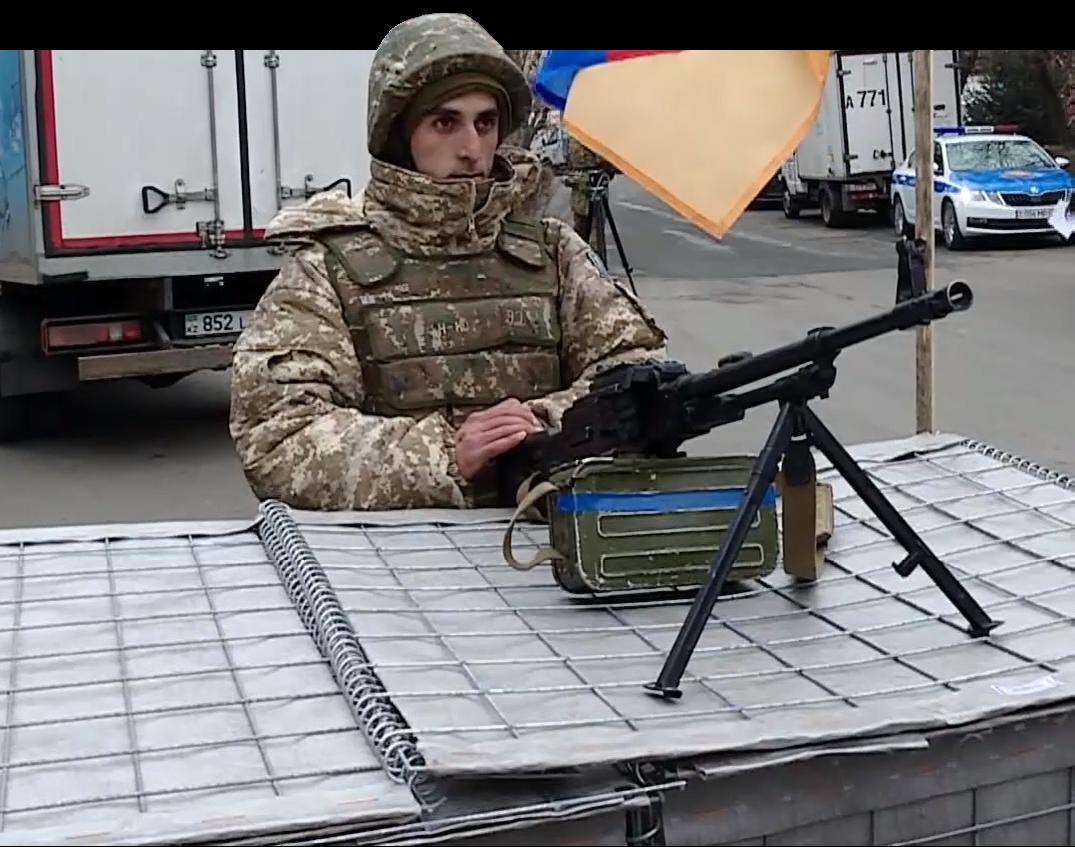
of which have Russian minorities in varying numbers. Kazakhstan, for example, had an 18 per cent ethnic Russian minority in 2021.18 The glaringly obvious failure of any Collective Security Treaty Organization state to recognise a single Russian backed separatist region highlights that Russian impingement of territorial integrity is not something that members will tolerate.
Furthermore, inconsistent adherence to the charter has become more pronounced since the intervention in Kazakhstan in January 2022. Internal unrest would ordinarily be considered to fall under the ‘national jurisdiction’ of a member; however, in this case it was framed by Putin as ‘a pretext’ for external actors to attack the state.19 The involvement of the Collective Security Treaty Organization marked a stark change in policy from nonintervention in Kyrgyzstan in 2010, despite the similarity of events. Intervention in Kazakhstan showed for the first time that the Collective Security Treaty Organization had teeth; this changed its members’ perceptions of the role it could play and in the future it will be harder for Russia to justify non-intervention. In a time when Russia’s capacity to project power is being sorely tested by the crippling losses its
15CSTO, ‘January 10th extraordinary session of the CSTO Collective Security Council’, CSTO (January 10th, 2022).
16en.odkb-csto.org/25years/index.php
17Gareth Evans, ‘Russia and the ‘Responsibility to Protect’’, International Crisis Group (August 31st, 2008).
18economist.com/asia/2022/01/29/howkazakhstan-became-more-kazakh
19‘January 10th extraordinary session of the CSTO Collective Security Council’, CSTO (January 10th, 2022).
“INTERVENTION IN KAZAKHSTAN SHOWED FOR THE FIRST TIME THAT THE COLLECTIVE SECURITY TREATY ORGANIZATION HAD TEETH; THIS CHANGED ITS MEMBERS’ PERCEPTIONS OF THE ROLE IT COULD PLAY AND IN THE FUTURE IT WILL BE HARDER FOR RUSSIA TO JUSTIFY NON-INTERVENTION.”On guard: An Armenian soldier – a member of the Collective Security Treaty Organization’s peacekeeping team – in Almaty, Kazakhstan, in January 2022. Picture: Mil.ru, CC BY 4.0 14Roy Allison, ‘Protective Integration and Security Policy Coordination: Comparing the SCO and CSTO’, The Chinese Journal of International Politics, 11:3 (Autumn, 2018) 297-338, (p. 335).
military is sustaining in Ukraine, it seems unlikely that Russia would be able to act in Central Asia. Reputational damage of the Russian military and its equipment has been severe since the invasion of Ukraine. Central Asian states have been turning away from Russian arms; Kazakhstan, Tajikistan, and Kyrgyzstan, for example, are buying Turkish Anka and Bayraktar drones.20 When combined with the recent spate of member states refusing to host exercises (Kyrgyzstan in 2022 and Armenia in 2023), Russia’s ability to influence the region through the Collective Security Treaty Organization seems to have declined significantly.
Central Asian states saw value in the Collective Security Treaty Organization so long as it provided them with the advantages explained by the concept of protective integration. However, the determination of Russia to enact aggressive foreign policy in its near abroad seems to have undermined this. Central Asian states have, since the full scale invasion of Ukraine, sought to distance themselves from the organisation. The deference which previously characterised their interactions with Russia within the Collective Security Treaty Organization framework seems to have faded.
20lowyinstitute.org/the-interpreter/howrussia-loses-allies-amid-war-ukraine
21rusi.org/explore-our-research/publications/ commentary/chinas-dominance-central-asiamyth-or-reality
22Nicola Contessi, ‘Foreign and Security Policy Diversification in Eurasia: Issue Splitting, Co-alignment, and Relational Power’, Problems of Post-Communism, 62 (2015) 299-311, (p. 299).
23rusi.org/explore-our-research/publications/ commentary/chinas-dominance-central-asiamyth-or-reality
24Sarah Teo, ‘Toward a DifferentiationBased Framework for Middle Power Behaviour’, International Theory, 14:1 (2022) 1-24, (p.21).
“AFFAIRS IN THE REGION HAVE BECOME INCREASINGLY COMPLEX SINCE THE TURN OF THE CENTURY AS REGIONAL ACTORS OTHER THAN RUSSIA HAVE SHOWN INCREASING INTEREST. NONE MORE SO THAN CHINA, WHOSE TIES HAVE GROWN EXPONENTIALLY.”
Affairs in the region have become increasingly complex since the turn of the century as regional actors other than Russia have shown increasing interest. None more so than China, whose ties have grown exponentially since the early-2000s; the Belt and Road Initiative has expended vast sums, building economic ties, and the Shanghai Cooperation Organisation has built up both diplomatic and security relations. Significantly, Pakistan and India were permitted to join the Shanghai Cooperation Organisation in 2015, demonstrating how cooperation is expanding beyond the traditional partners of Central Asia. Equally, powers such as Iran and Turkey are increasing defence and political ties in the region. The expansion of influence over Central Asia disrupts the traditional power dynamic: where Russia acts as regional security guarantor and
China represents the economic backing for development.21 A significant reason why so many different powers are able to exert influence in Central Asia is due to the region’s coherence to a foreign policy approach termed ‘multivectorism’. Multivector foreign policy involves the pragmatic non-alignment of foreign relations, designed to maximise benefits from foreign actors while maximising state security. This way of operating started with Nursultan Nazarbaev in Kazakhstan in the early-1990s; working to balance a natural reliance of Kazakhstan on their former hegemon, while trying to maximise their options.22 Subsequently, all of the Central Asian states have adopted similar approaches; working hand in hand with powers adversarial towards one another.
China has not assumed total dominance of Central Asia following the weakening
of Russian control as many predicted. China has faced significant issues with the Belt and Road Initiative and is largely distrusted by the populations of Central Asian states, who do not trust the economic motives and fear a debt trap.23 This has opened up the region to influence from middling powers; Turkey, Iran and India are all important players. India has always been involved in Central Asia, however, in recent years it has ramped up its involvement drastically, economic ties are widespread and India’s decision to join the Shanghai Cooperation Organisation represented a significant step towards developing more security ties with the region. Turkey and Iran have also increased their involvement with religious and cultural ties playing a significant role in facilitating greater involvement. These middling powers have found it easy to involve themselves in Central Asia, largely because they are not great powers and are understood to leverage this to their advantage.24 This trend suggests that Central Asia is likely to become more multi-polar in the future.
Unlike the close ties which
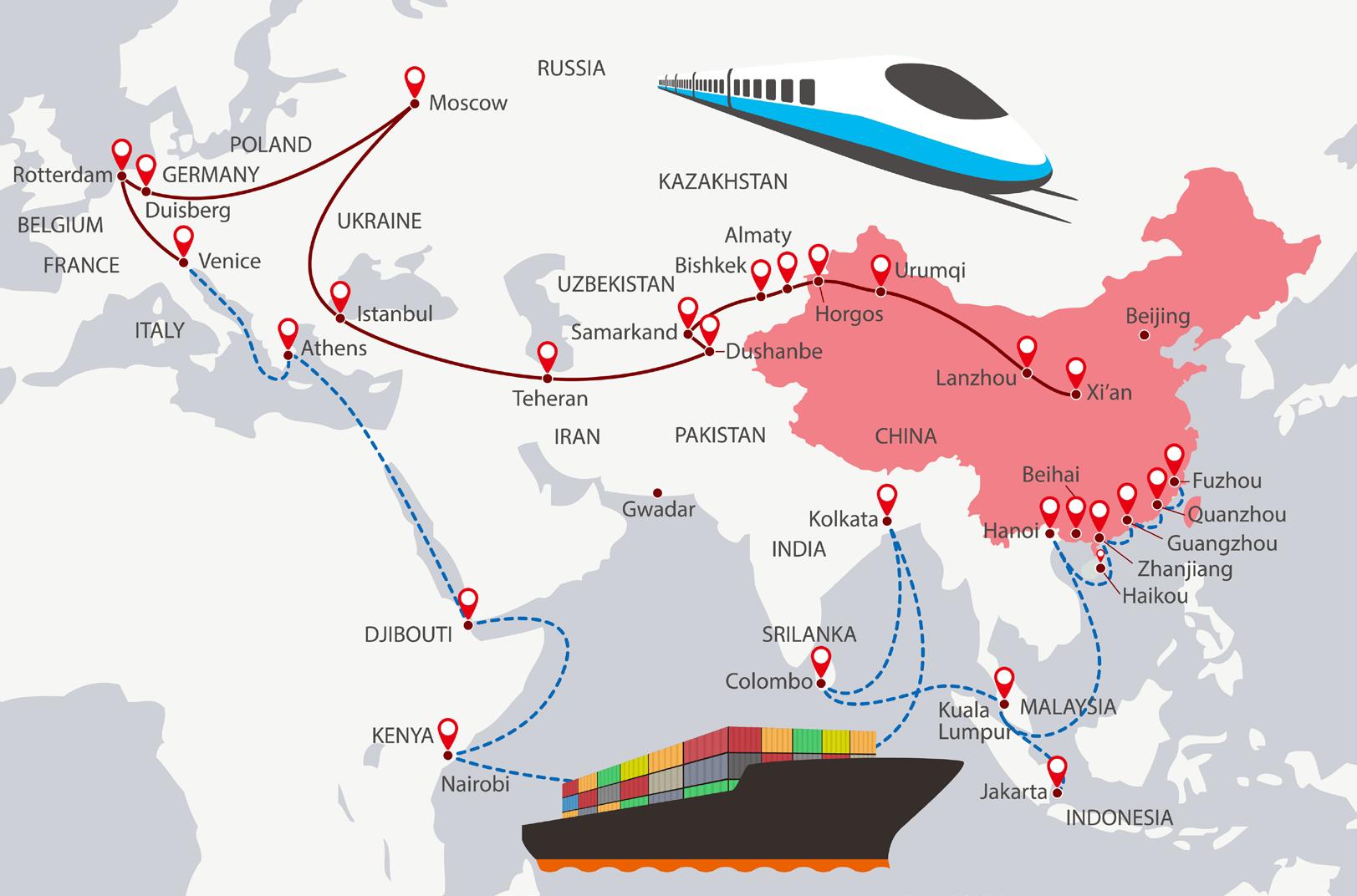
define Russian and – to an increasing degree – regional relations, the aphorism of ‘the stans’ has defined the popular understanding of Central Asia in the West following the five states’ independence. This has constrained appreciation of the region to being a homogenous hinterland of little importance to global affairs.25 While thrust into focus in the early years of this century by overseas basing requirements for operations in Afghanistan and Iraq, the region has been largely ignored in the West following the winding down of the war on terror.26 The foreign policy and defence ‘tilts’ and ‘pivots’ of the UK and US towards the IndoPacific are perhaps taking too narrow a focus and missing the significance of the centre.
Relations in Central Asia are, then, incredibly complex and involve a variety of selfinterested external actors vying for influence and control. It is vital, however, to not forget the Central Asian states themselves, they are not merely countries upon which foreign policy is carried out, they possess a sophisticated capability to navigate the competing external forces in their region.
The influence of the Collective Security Treaty Organization in Central Asia has declined significantly in recent years, primarily owing to Russian expansionism and the organisation’s intervention in Kazakhstan. The weaknesses of its formal function have always been well known; there has also been a tacit acquiescence to Russian dominance of the organisation. However, the benefits for Central Asian states of protective integration aligned with Russia have declined significantly, with Russian expansionism creating concern within the Collective Security Treaty Organization. Recent refusals to host joint exercises, combined with the lack of support for Russian action in Ukraine, seem to suggest that the organisation no longer represents a group with similar outlooks.
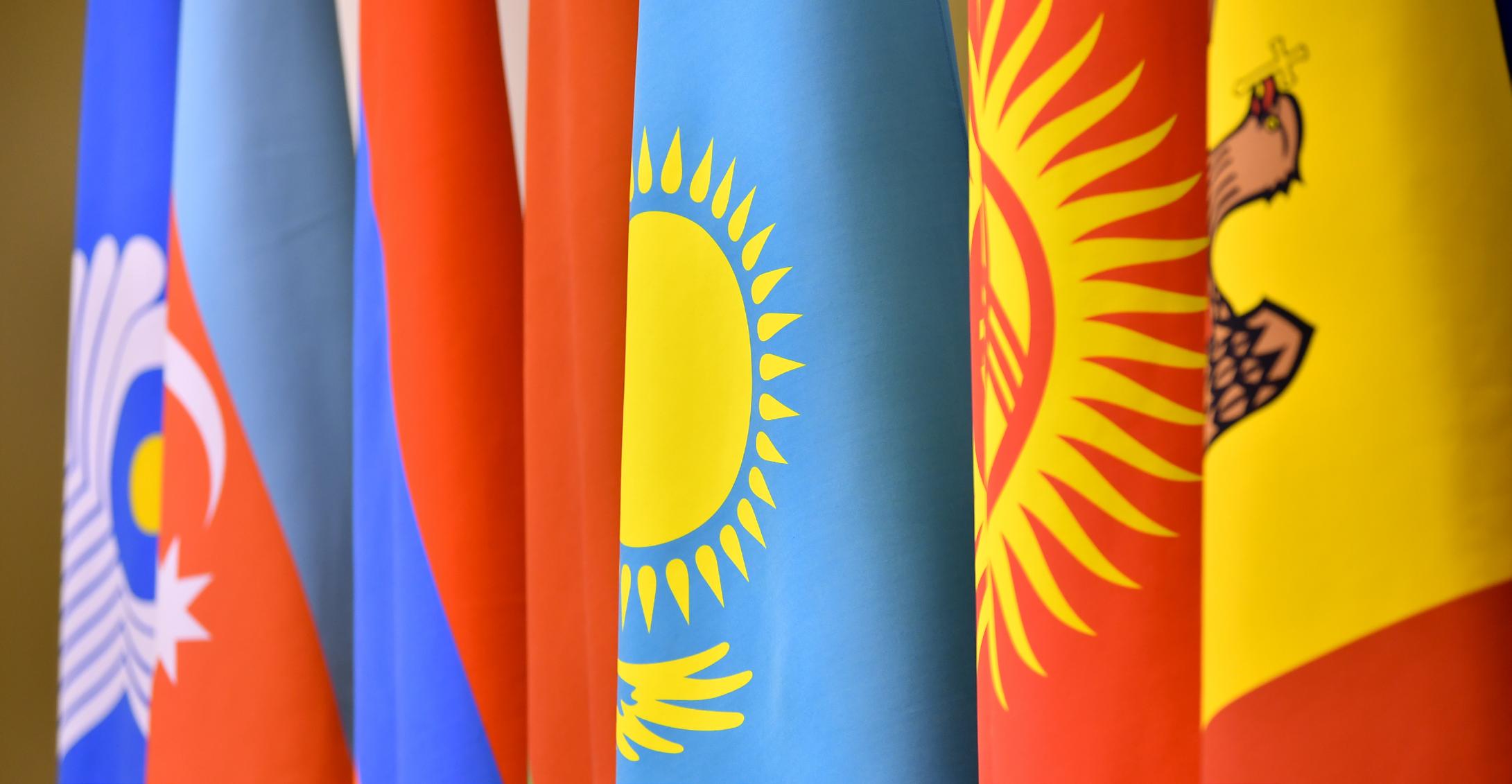
Interestingly, the decline of Russian influence in the region has not lead to absolute dominance by China. Russia maintains certain structural and soft influences over Central Asia that seem unlikely to change; while China has issues maintaining its huge level of commitment, and faces significant problems of distrust
within the region. Instead, the region has provided an interesting note on the role of middling and smaller powers in the modern era. The smaller powers of Central Asia have demonstrated that they can exercise a degree of autonomy through the employment of multivectorism. This is a significant change from the traditional understanding of clientalistic post-Soviet states. Also, middling powers such as Turkey, Iran and India have, through their interactions in the region, demonstrated that it is possible to make a real impact on global relations without being a great power. These points have broader implications for the globe, with multivector policies being suggested as a means for south-east Asian states to balance their reliance on China economically – and resist the potential clientelism that comes with this – through robust cooperation with nations such as the United States.27 They are also a sign of the increasing role of middling powers in international affairs going forward.
Due to climate pressures, Central Asia will assume greater centrality in the future. Its fossil fuel reserves represent a huge
prize for whichever countries are able to exert influence in the region. Equally, water instability makes it likely that Central Asia will become incredibly unstable in the near future. There has never been a more important time then to develop relations and capacity in the region.
It seems inherently contradictory that the West is turning to the East in direct response to China’s interest in the region; when China, Russia, and various other regional powers show a great deal of interest in Central Asia to no significant western response. When Mackinder came up with his heartland concept, it represented within Britain an almost heretical challenge to the importance of seapower in controlling the world. Is a similar challenge required as strategy turns ever eastwards and is once again becoming infused with the primacy of seapower?
25calvertjournal.com/features/ show/13051/is-it-time-to-stop-callingcentral-asia-the-stans
26hir.harvard.edu/pivot-of-central-asia